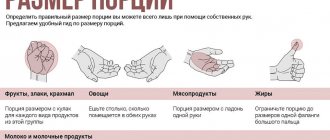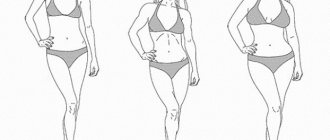- MixSport
- Blog
44392
25386
26.09.2020
It happens that a woman in training can move mountains. And it happens that even the simplest exercises do not work out. The fact is that the effectiveness of training depends on the menstrual cycle. Therefore, for each phase of the cycle you need to select the right loads.
It happens that a woman in training can move mountains. And it happens that even the simplest exercises do not work out. The fact is that the effectiveness of training depends on the menstrual cycle. Therefore, for each phase of the cycle you need to select the right loads.
We tell you what phases the menstrual cycle consists of, what happens during each of them, how to select loads depending on the cycle and whether it is possible to play sports during menstruation.
The article was prepared based on a lecture by the famous obstetrician-gynecologist, STB TV channel expert Lyudmila Shupenyuk, which took place as part of the FKCUP SPORT conference.
Load cycling: macroperiodization
The first thing to do is to distribute the training cycle into phases. If we proceed from a training program with a fixed number of repetitions in each exercise (only the weight changes - upward), then the loads in the cycle are distributed approximately as shown below. The same scheme applies to the program, where not only the weight of the bar increases, but also the number of repetitions; only in this case you increase the weight of the bar much less often, but each time you add more weight to it. In between these increases, you increase the number of repetitions.
1) Preparatory phase
During the first phase of the training cycle, following a rest period of 7-10 days, you work with weights that are 10-20% less than what you have already mastered (this does not mean your maximum working weight, but the one you can handle). work in the range of 3-4 sets of 8 repetitions).
At this stage, the emphasis is not on the maximum number of repetitions, but on developing the ideal exercise technique . In addition, it is an excellent psychological relief.
And no matter how much people in the gym show off their weights, fans of monotonously heavy training usually do not know the correct exercise technique. And if the technique is incorrect, then such “achievements” are worthless.
It’s better to make 10 times less weight than to struggle like the characters in this video:
As the intensity of the load increases, the training volumes will gradually decrease, i.e. you'll do fewer working sets, fewer exercises, and possibly workout less frequently.
The preparatory phase lasts 3-4 weeks. This phase is needed so that you can slowly “accelerate”, relax and improve your technique. You should follow a linear progression of weights: 80% of working weight, 85% of working weight, 90% of working weight, 100% of working weight.
2) Second phase
Goal: get to your highest weight in the past. As always, your progress will be measured by increasing the working weight of the barbell. If you cannot increase the weight, reduce your training volumes - reduce the number of sets and/or exercises. Perhaps exercise less often. Lower volumes at higher intensity, along with adequate recovery between workouts, are usually guaranteed to provide improved results.
At an early stage of the cycle, you sometimes discover that one of the exercises (or maybe more than one) is worse for you than the others - the weight does not increase. In this case, reduce the weight of the barbell in this exercise (or exercises) so that the exercise becomes equal in terms of “difficulty” to other exercises in the complex.
The training will become harder, but the progress will be slow and gradual. No need to immediately jump to your maximum working weight! Get there gradually .
The second phase lasts 3-4 weeks. You should follow a linear progression of weights up to your maximum working weight (1 rep max): 80% of your maximum working weight, 85% of your maximum working weight, 90% of your maximum working weight, 100% of your maximum working weight.
3) Growth phase
This is the most important phase of any cycle, and it is for this that you prepared in the previous stages. Good preparation will help you stretch it out as long as possible and get the most out of it. If, within this cycle, you increase in each of the basic exercises, this means that you generally increase muscle mass with proper nutrition, of course. These are the exercises you should focus on throughout the intensive phase of the cycle.
If you want to build as much muscle mass as possible, then accessory exercises should not interfere with the growth of your results in the main exercises. Ideally, you should increase evenly in all exercises until the end of the cycle. In practice, in order to achieve the maximum in the basic exercises, you sometimes have to reduce some of the auxiliary exercises towards the end of the cycle or perform them less often.
Again, ideally, you should not exclude any exercise from the program until you have improved in it compared to the previous cycle. But sometimes it is necessary to get rid of auxiliary exercises at an earlier stage if they interfere with progress in the main exercises. Moreover, if your responsiveness is really bad, you may not want to include assistance exercises in your program even at the very beginning of the cycle - at least not at first.
Let's say you are tightly stuck in one basic exercise. This in itself is not a reason to interrupt the cycle. You have three options: either simply maintain the achieved level in this exercise, or throw it out of the program, or replace it with a similar one. At the same time, continue the cycle to get the most out of other core exercises. Stop the cycle only if you get stuck in the vast majority of movements.
Is it possible to exercise during ovulation?
What is this process? This is the period of the cycle in which the egg is released from the follicle. At this time, with timely sexual intercourse, conception occurs. During this process, the woman will experience the following symptoms:
- Vaginal discharge changes color and volume;
- sexual attraction to a man increases;
- if a girl monitors her basal temperature, then during the period of ovulation she begins to jump;
- the cervix becomes soft and raised;
- the breast becomes harder and begins to hurt;
- the lower abdomen aches, pulls, hurts;
- the volume of luteinizing hormone increases.
Some women themselves stop exercising during ovulation because they experience this unpleasant series of sensations. But what if this phenomenon occurs in a woman without discomfort, will it harm the physical. activity to the normal course of this process?
If you answer this question simply, then sports will not harm a woman who plans to become pregnant at the next ovulation. Scientists have long refuted the fact that physical exercise is harmful to a woman’s reproductive system. On the contrary, there are a number of advantages from activity for a woman who plans to become a mother.
- Physical activity has a very beneficial effect on the body's immune system;
- sport causes the production of insulin, which has a good effect on carbohydrate metabolism;
- exercise increases sexual desire;
- promotes weight normalization;
- has a positive effect on the functioning of the thyroid gland and, as a result, increases the production of progesterone;
- during sports activities, the blood vessels of the whole body and female organs are strengthened, and this will have a positive effect on bearing a child;
- after such activities, the woman has a sound sleep, which means a healthy central nervous system;
- There is a connection between sports and conception: the more often a woman exercises, the more sexual intercourse she has and, accordingly, there are increased chances of conception.
So, we conclude: if a girl is able to play sports during the period of egg release, then this will only bring her benefit, but not harm!
Loop example
The main criterion for the duration of the macro cycle is your well-being . Under no circumstances should you force your body! Otherwise, you will need too much time to recover before the next cycle.
So, the training cycle can be divided into four phases:
• Start with three to four “easy” weeks. But don't relax, give yourself a decent workout. During this period, you should increase the weights in each exercise from 85-90% of those previously mastered to 95%.
• Then there are several weeks of slowly building up to your previous best results.
• Next comes the growth phase - the first few weeks of mastering new scales. If you feel that the load is too much for you, reduce the number of sets, and if this does not help, feel free to cross off a couple of auxiliary exercises from the list, or even all of them.
• Try to extend the growth phase as long as possible. If necessary, sacrifice accessory exercises to progress in the basic ones. 0.5-1 kg per week to each of the basic exercises . Increase the weight on your secondary exercises, too, if you're still doing them.
VERY IMPORTANT: you cannot come to training and immediately start training with your maximum weight, you need to reach it during warm-up according to the pyramid principle: for example, 20 kg -30-40-50-60-70, etc. There are many options, the essence is the same: we warm up efficiently and don’t pretend!
What it looks like in practice:
• Workout 1: 40% of work weight • Workout 2: 60% of work weight • Workout 3: 70% of work weight • Workout 4: 80% of work weight • Workout 5: 85% of work weight • Workout 6: 90 % of working weight • Workout 7: 95% of working weight • Workout 8: 100% of working weight (our old maximum) • Workout 9: 102.5% of working weight • Workout 10: 105% of working weight • Workout 11: 107.5 % of working weight • Workout 12: 110% of working weight • Workout 13: 112.5% of working weight
The number of rest days between workouts varies depending on the severity of the load. When the load is 40%-60%, you can train the muscle group more often (for example, twice a week). But as the load increases, the number of rest days also increases.
We cannot write you the exact weight on the training apparatus because we do not know your maximum (and ideally it is constantly growing) . Take the time to take a calculator, a training diary and a pen in order to write down your training weights for training for several months in advance. The easiest way to do this is using a table. At the top (horizontally) write the training number or the date it will take place. And on the left (vertical) write a list of exercises. After that, fill in the cells with numbers indicating what weight you will work with. Learn to plan your achievements. After all, this is very important to be able to do not only in the gym.
Phase III (day 12-15 of the cycle)
Ovulation occurs on days 12-15 of the cycle. This is exactly the period when hormones are at their maximum, a woman feels more confident and is in a state of “can do anything.” If you feel good during ovulation, give your best in training.
But some women feel a loss of strength, so you should reduce the intensity of your workouts and eliminate exercises that increase intra-abdominal pressure. Such exercises include barbell squats, deadlifts, leg presses, and lunges.
Micro periodization
However, we should not hope that progress will continue indefinitely. Our body is not iron or even rubber, so without farming, progress always slows down and stops over time. In order to push this point back as far as possible, we will start using another trick called microperiodization .
Let’s say that after “overclocking” from 40%, you broke through the previous “ceiling of achievements” (100%) and within a month or two reached 110% of your previous weight. This is where it’s time to use microperiodization. To do this, we will set an easy week after the usual “hard” week.
Those. our diagram will look like this:
• Hard week 100% • Easy week 40% • Hard week 100% • Easy week 40% • Hard week 100% • Easy week 40%
You can choose a more complex scheme: light – medium – heavy:
• Workout 1: 40% of the maximum working weight (hereinafter we mean your maximum working weight, i.e. the one that you can perform 1 time) • Workout 2: 60% of the working weight • Workout 3: 80% of working weight • Workout 4: 100% of working weight
• Workout 5: 50% of work weight • Workout 6: 70% of work weight • Workout 7: 90% of work weight • Workout 8: 102.5% of work weight, etc.
In short, come up with it as you please and conveniently, you get the point: easy workouts are replaced by hard ones.
The main rule : easy training should be really easy, and not so that your eyes pop out of your head. Reduce the working weights as mentioned (to 40%) and work without failure.
Load cycling is one of the well-known methods to overcome the adaptation problem . There are different schemes, but the meaning is the same: periodic alternation of loads of different sizes makes it possible to restore sensitivity. Like with coffee: if it doesn’t invigorate you, reduce the dose for a while. In addition to restoring sensitivity, load cycling also serves as an excellent prevention of under-recovery and injury.
Errors in determining the starting load
If you incorrectly determined the starting weights in one or more exercises, correct the mistakes in the next workout. For example, squats ( The Ideal Squat for a Tight Butt ) may be harder than other exercises. It's okay - the next time you squat, reduce the weight of the barbell by 5-10%.
Errors in using loops:
1) Don't overexert yourself during easy workouts and don't demand too much from your body in the second half of the cycle. 2) Do not reduce the number of easy workouts, trying to quickly move on to a more difficult stage. 3) Don't try to do as many reps as possible with the light weights you start with. If you go all out with light weights, you will violate the basic principle of cycling: easy - hard.
Everyone must choose the most suitable cycle for themselves; here you need to think and experiment. Usually one of these points causes “insurmountable” problems: either you don’t want to think - “this is not nuclear physics”, or experiment - “I don’t have time, I want to pump myself up for the summer/new year/vernal equinox.”
To begin with, it is best to split your workouts into hard and light in equal proportions - 50/50. Everything else is selected individually . If you start tearing veins at an early stage of the cycle, then you will exhaust yourself at the start.
Cycling training frequency
In addition to changing the magnitude of the load, you can also practice changing the frequency of the loads. Thus, we will try to resolve the contradiction between the advantages of infrequent exercise (when sensitivity has time to recover) and frequent exercise (“spurring” muscles to grow at a constantly high rate of protein synthesis after the previous load).
The recommended range for training one muscle group is from 1 to 3 times a week (How many times a week should you go to the gym to train? The best time of day for training).
Macrocycle of 3 microcycles:
1st cycle : 3 weeks the muscle is trained 3 times a week (for example, full body training, more details in the article “Myth from the 2000s: training for mass and relief” ) + 4th week - recovery (moderate loads);
2nd cycle : 3 weeks - 2 times a week or 3 times every 2 weeks (for example, top/bottom) + 4th week - recovery;
3rd cycle : 3 weeks - 1 time per week (for example, splits) + 4th week - recovery.
Then the macrocycle is repeated: 3, 2, 1 time per week.
Nutrition
Progesterone rising towards the end of the cycle has a slightly stimulating effect on metabolism. The need for additional energy is relatively low in the first half of the cycle, but increases because of this in the second. Scientists estimate that an increase in energy consumption, on average, increases by 90-280 calories per day above normal. This is manifested by a feeling of hunger and a craving for high-carbohydrate, sweet and fatty foods. If you don’t control your nutrition during this period, you can go overboard with calories and go beyond these numbers.
Some women are more prone to hypoglycemia (that is, a severe drop in blood sugar) in the second half of the cycle, which can also stimulate hunger. Ensuring that your blood glucose levels remain stable can be very helpful during such times. For example, it is worth increasing the amount of complex carbohydrates, as well as fruits and vegetables with a high fiber content.
Some studies have shown that supplements high in magnesium help with PMS sugar cravings, and supplements with chromium help use calories for energy more efficiently, i.e., improve insulin sensitivity.
Consult your physician before using any supplements.
What to do about it?
If you are just starting a diet, then it is more correct to start it after menstruation, when cravings for junk food and hunger become weaker.
If you're already on a diet, a planned increase in calories 5-8 days BEFORE (when you're experiencing increased energy expenditure and hunger) can help with long-term diet adherence. At least a small planned increase in calories these days could help avoid loss of control and breakdowns in fatty and sweet foods. It's better to eat 100 extra, controlled calories every day for a week than to end up eating 1,000 extra calories from chocolate multiple times, which could wipe out the entire deficit you've created over the course of the week. This strategy can be quite beneficial in the long run.
Of course, there's another way to look at it: at least in theory, strict calorie control during periods when energy expenditure is high for hormonal reasons can help you lose fat more quickly.
Rate of progress
All talk about 10 kg of muscle mass, allegedly added in one and a half to two months of hard training without steroids or weight loss, belongs to the genre of unscientific fiction. In a week, the maximum weight (meaning: lean muscle mass) that a person can gain ranges from approximately 0.5 to 1 kilograms. Yes, unfortunately, it’s not possible to build up huge muscles in a week or a month. It follows from this that the maximum that a person can gain in one month is 4 - 5 kilograms of lean muscle.
Even purely hypothetically, it is impossible to gain 10-25 kg of muscle in a month; sometimes this is unrealistic even after years of training.
But even such growth rates can only be maintained sporadically . Life will not allow you to exist without family, work, friends, etc. In reality, an amateur can only add mass and strength using the proven method of slow but inexorable progress.
About the program
All exercises in the created program are aimed at gaining muscle mass.
Each exercise should be done for 6 repetitions - the weight must be chosen appropriately (large). You need to choose weights so that the last repetition is almost a failure. This decision will “explode” your muscles and give impetus to active growth. The entire program is divided into 3 cycles, each of which lasts 8 weeks. Between cycles you definitely need a 2-week break, which will give your body the opportunity to properly rest. At this time, it will actively grow and recover. And the body will approach the next cycle unaccustomed to stress and completely rested, which only plays into the hands of the athlete.
The cycle includes three workouts per week, every other day (Monday/Wednesday/Friday, or Tuesday/Thursday/Saturday). Each workout should last an hour maximum, sometimes it can be longer, but not much.
What to do if you miss a workout?
If, upon arriving at the gym, you find that you are having a “bad” day today, do not force yourself to do all the required exercises, no matter what stage of the cycle you are at. If you don't feel well before your workout, postpone it for a day or two. Consider it an extra day of rest (it's a good thing) and pick up where you left off.
If you have already started working out and realize that you are out of shape, reduce the weight of the apparatus by half and do a few repetitions less than the planned number. Don’t try to deceive your body - it won’t work anyway . Don’t worry that you’re “off schedule”: at the next workout, do what you planned for the “bad” day, and thus resume moving through the cycle.
IV phase (16-28/30 day of the cycle)
This phase is called the “progesterone” phase, since estrogen levels decrease and progesterone levels, on the contrary, increase. During this period, metabolism slows down and fluid is retained in the body. So don't panic if you see an extra 1-2 kg on the scale.
On days 16-24, progesterone levels are especially high, so you can withstand prolonged and monotonous exercise. For example, long distance running. But on the 25-28th (for some, the 30th) day of the cycle, many people experience the most unpleasant period - PMS. It becomes difficult to control appetite, apathy and irritability overwhelm the woman, and emotions change literally in a minute. In this case, lighten the load. During PMS, yoga classes are an ideal option - they will not only help maintain muscle tone, but also restore mental balance.
Follicular phase
The first week after menstruation is the best period for sports and physical activity. At this time, the level of estrogen in the female body is high, which increases the force of muscle contraction, promotes muscle growth and affects the speed of recovery.
- The level of the hormone testosterone increases, which also promotes muscle growth.
- The body uses glycogen from muscle fibers as fuel. Make sure you have enough slow carbohydrates in your diet.
The emphasis can be placed on heavy strength training aimed at growing and strengthening muscles. If you plan to increase the intensity and complexity of your classes, now is the time. Add weights, increase the number of repetitions. The body can easily withstand maximum loads, endurance and strength are at maximum levels, and the pain threshold is noticeably reduced.
Those wishing to lose weight are encouraged to engage in high-intensity interval and cardio training.
Scientists have found that during the follicular phase, muscle fibers are less susceptible to injury and recover faster.











